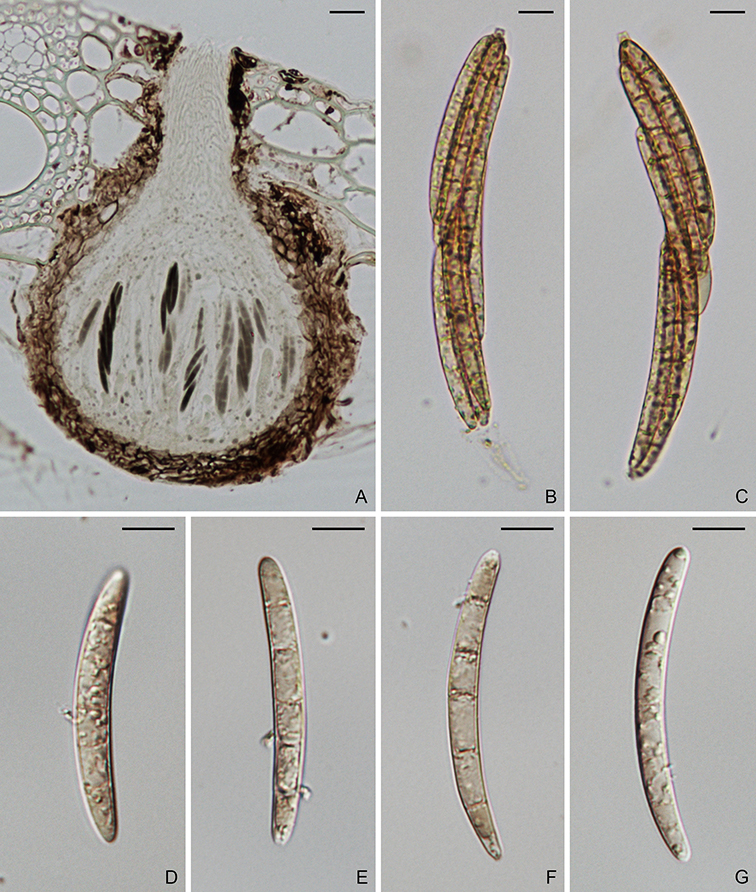
Figure. Pseudohalonectria lutea (NYBG01050480). A. Ascomatum. B–C. Asci. D–G. Ascospores. Scale bars: A = 20 µm; B–G = 10 µm.
Pseudohalonectria lutea Shearer, Can. J. Bot. 67(7): 1950 (1989).
MycoBank: MB136213.
Morphological description: Ascomata perithecial, submerged, gregarious, orange brown, globose to subglobose, 230–530 µm in diam, with an orange brown to yellow brown, cylindrical, neck, 350–600 × 95–170 µm. Paraphyses hyaline, septate. Asci unitunicate, clavate, 8-spored, 120–175 × 14–17.5 µm, with a refractive ring. Ascospores 3–4-seriate in the ascus, curved, hyaline to yellowish, fusiform, 5-septate, not constricted at the septum, smooth, 60–85 × 5.5–8 µm.
Specimens examined: Chile, small stream at Esteros Llanquehue, Region X., from submerged wood, 26 Jun. 1984, C.A. Shearer, CS-744-1A (holotype, NYBG01050490, NYBG01050491; ex-type culture, ATCC66339); USA, Wisconsin, Vilas, Allequash Lake, on submerged decomposed twigs of Quercus sp., 09 Aug.1994, J.L. Crane and P.M. Fallah, P4-3, 54022 (ILLS00160415); ibid., 25 Oct. 1996, J.L. Crane and P.M. Fallah, P4-29, 54023 (ILLS00160414).
Hosts/substrates: from submerged Quercus sp. and other wood.
References:
Shearer CA. 1989. Pseudohalonectria (Lasiosphaeriaceae), an antagonistic genus from wood in freshwater. Canadian Journal of Botany. 67(7):1944–1955.
Geographical distribution: Chile. USA, Wisconsin.
Copyright 2022 by The American Phytopathological Society. Reproduced, by permission, from Luo, J., and Zhang, N. 2022. The Rice Blast Fungus and Allied Species: A Monograph of the Fungal Order Magnaporthales (https://my.apsnet.org/APSStore/Product-Detail.aspx?WebsiteKey=2661527A-8D44-496C-A730-8CFEB6239BE7&iProductCode=46826). American Phytopathological Society, St. Paul, MN.